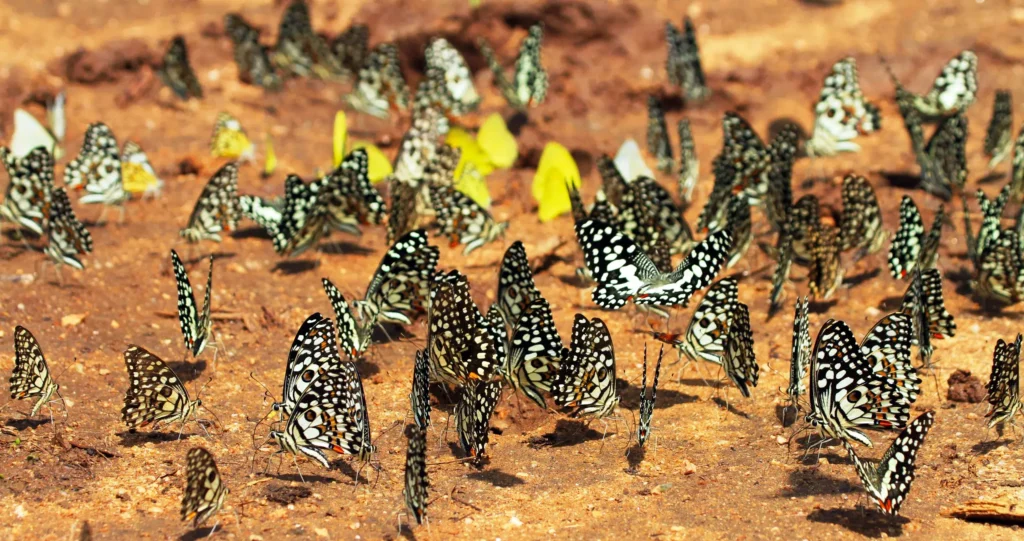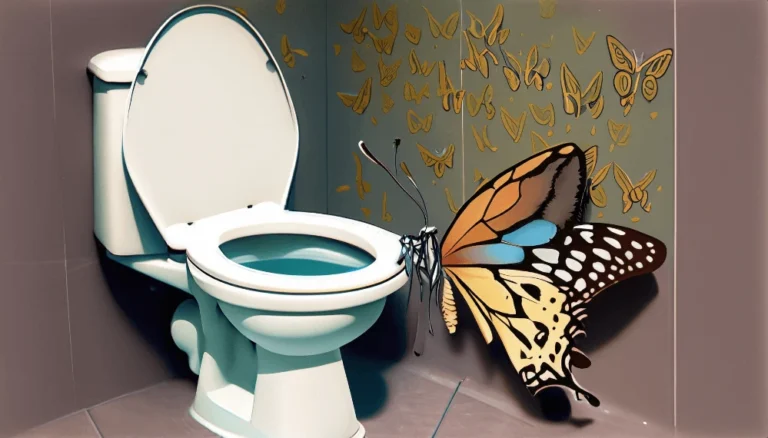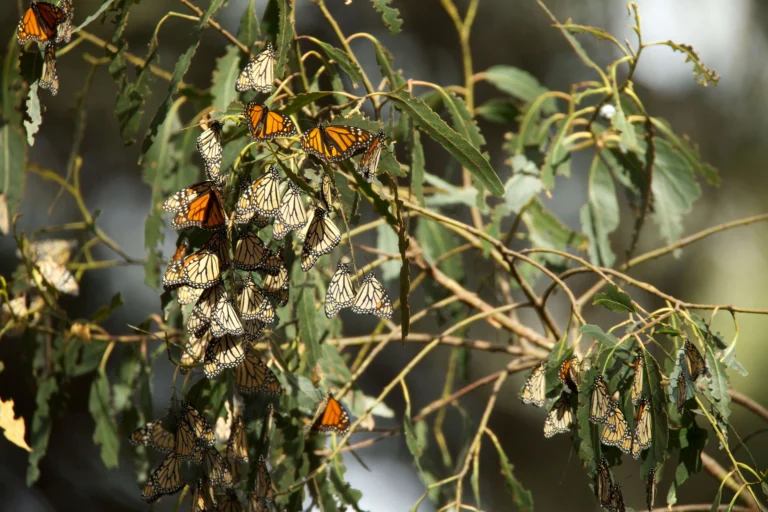Uncovered: Do Butterflies Eat Poop? Dung-Puddling & Diet
Yes, some butterflies do eat poop. While many butterflies drink nectar from flowers for energy, they also need other nutrients. Poop provides important minerals like salts and nitrogen that they can’t get from nectar. Some butterflies, especially those in areas with few nutrients, engage in dung-puddling behavior to obtain necessary nutrients. So, while it might sound strange, poop can be a useful food source for butterflies.
Table of Contents
Introduction
People often spot butterflies around flowers, as they sip nectar. But their eating habits can sometimes be surprising. One question that often pops up is, “Do butterflies eat poop?” It might sound odd, but exploring this question reveals interesting details about butterfly behavior and what they need to stay healthy.
This article will discuss why butterflies choose this diet, the nutrients they obtain from it, and its significance in protecting butterflies.
Butterfly Diet: An Overview
People often see butterflies as delicate creatures that sit on flowers and use their long proboscis to drink nectar.
Indeed, nectar serves as the primary source of nutrition for most adult butterflies. Rich in sugars, nectar provides the energy they need for flight and reproduction.
Beyond Nectar: Other Dietary Sources
However, butterflies don’t solely rely on nectar. Their diet can be diverse, encompassing a range of foods that cater to their specific nutritional needs. Certain species actively feed on overripe fruits.
Fermented fruits have sugars, minerals, and more. Some butterflies like tree sap because it has amino acids and minerals. addition to fruits.
Setting the Stage for Surprises
Knowing what butterflies eat helps explain their surprising food choices, like poop. This broader dietary palette showcases the flexibility of butterflies and their ability to extract nutrients from various sources in their environment.
The Phenomenon of Mud-Puddling
Mud-puddling is a behavior exhibited by many butterfly species, primarily males. It involves landing on wet soil, mud, or even puddles and sipping the liquid. At first glance, it might seem like they’re simply quenching their thirst. But there’s more to this behavior than meets the eye.
The Quest for Minerals and Salts
Butterflies, when Mud-puddling, are usually in search of essential minerals and salts. These are not readily available in the nectar they consume. Sodium, for instance, is a vital element that butterflies seek during these puddling sessions.
This mineral plays a crucial role in their reproductive processes. Male butterflies, after obtaining these salts, can transfer them to females during mating, improving their children’s chances of survival.
Benefits of Mud-Puddling
Engaging in Mud-puddling offers butterflies a competitive advantage. Those who can access and ingest more minerals and salts are often more successful in reproduction. Moreover, these nutrients help in muscle activity, improving their flight and overall vitality.
It’s fascinating how such a simple act can have profound implications for a butterfly’s life cycle and success.
Why Do Butterflies Eat Poop? Reasons for Their Attraction
The Nutritional Treasure Trove in Poop
Poop, as off-putting as it may sound to us, is a goldmine of nutrients for many creatures, including butterflies. Like how they get minerals from mud, poop can provide important minerals not usually found in their main food.
Specific Minerals and Nutrients in Poop
Within poop, butterflies can find salts, nitrogen, and other essential minerals. These nutrients are especially vital for butterflies living in nutrient-poor habitats where other mineral sources might be scarce.
Moreover, the microbes breaking down the feces can produce compounds that are attractive to butterflies, signaling a potential nutritional source.
Poop is an extra resource.
Butterflies seek minerals from mud and other sources, like feces.
While it might not be their primary choice, in environments where minerals are limited, poop offers a reliable additional option.
Dung-Puddling: Observations and Studies
Documented Sightings of Butterflies on Feces
It’s not uncommon for nature enthusiasts, researchers, and even casual observers to spot butterflies congregating on animal droppings.
These observations, with photos and notes, help us understand which species do this behavior and when it happens.
Analysis of Feces: Unraveling the Attraction
Scientists curious about dung puddling have taken a closer look at feces to determine what exactly butterflies might be extracting. Studies reveal that, depending on the animal, feces can be a source of amino acids, salts, and even alkaloids.
These compounds not only support the butterfly’s physical needs but can also play a role in their defense mechanisms against predators.
Not Alone: Other Insects Join the Feast
Butterflies aren’t the only insects drawn to dung. Many beetles, flies, and even certain moths frequently visit feces for similar reasons. This shared interest points to the universal importance of these nutrient sources in the insect world.
Butterfly Species and Fecal Attraction
Not All Butterflies are Equal
Some butterflies like poop, but not all of them do. Knowing it is interesting, but not all species find it attractive. Just like with other behaviors and preferences, there are variations based on species, habitat, and even individual conditions.
Highlighting Specific Species
Among the myriad of butterfly species, a few stand out for their pronounced attraction to feces. For instance, researchers have frequently observed swallowtails and certain nymphalids engaging in dung-puddling.
Factors like nutrient availability in their native habitat and their physical requirements can influence their choice.
Patterns in Behavior: Tropical vs. Temperate
Regional differences can affect this behavior, which is interesting. Butterflies in tropical areas may have different tendencies for dung-puddling because of differences in soil nutrients compared to temperate zones.
Understanding these patterns helps us learn how these insects adapt and survive.
Implications for Butterfly Conservation

Why Different Habitats Matter
Knowing that some butterflies like poop helps us see why different homes for them are important. If we want to help butterflies, we need to make sure they have places with the right foods.
Problems from Changing Land
Farming, cutting down trees, and building cities can change where butterflies find their food. This can make it hard for them to stay healthy, have babies, and live long lives. It demonstrates the association of everything in nature to us.
How We Can Help Butterflies
Knowing what butterflies eat can help us help them. Some places for butterflies now have special water spots with the right minerals. This is like giving them a mini-mud puddle. By giving them what they need, we can make sure butterflies stay around for a long time.
Conclusion
Butterflies are amazing creatures. While we often see them around flowers, their food choices can surprise us. The fact that some butterflies might choose to eat from poop shows just how smart and adaptable they are.
They find ways to get what they need to live and stay healthy. By studying butterfly habits like dung-puddling, We can protect them and their environment by learning about nature’s connections.



